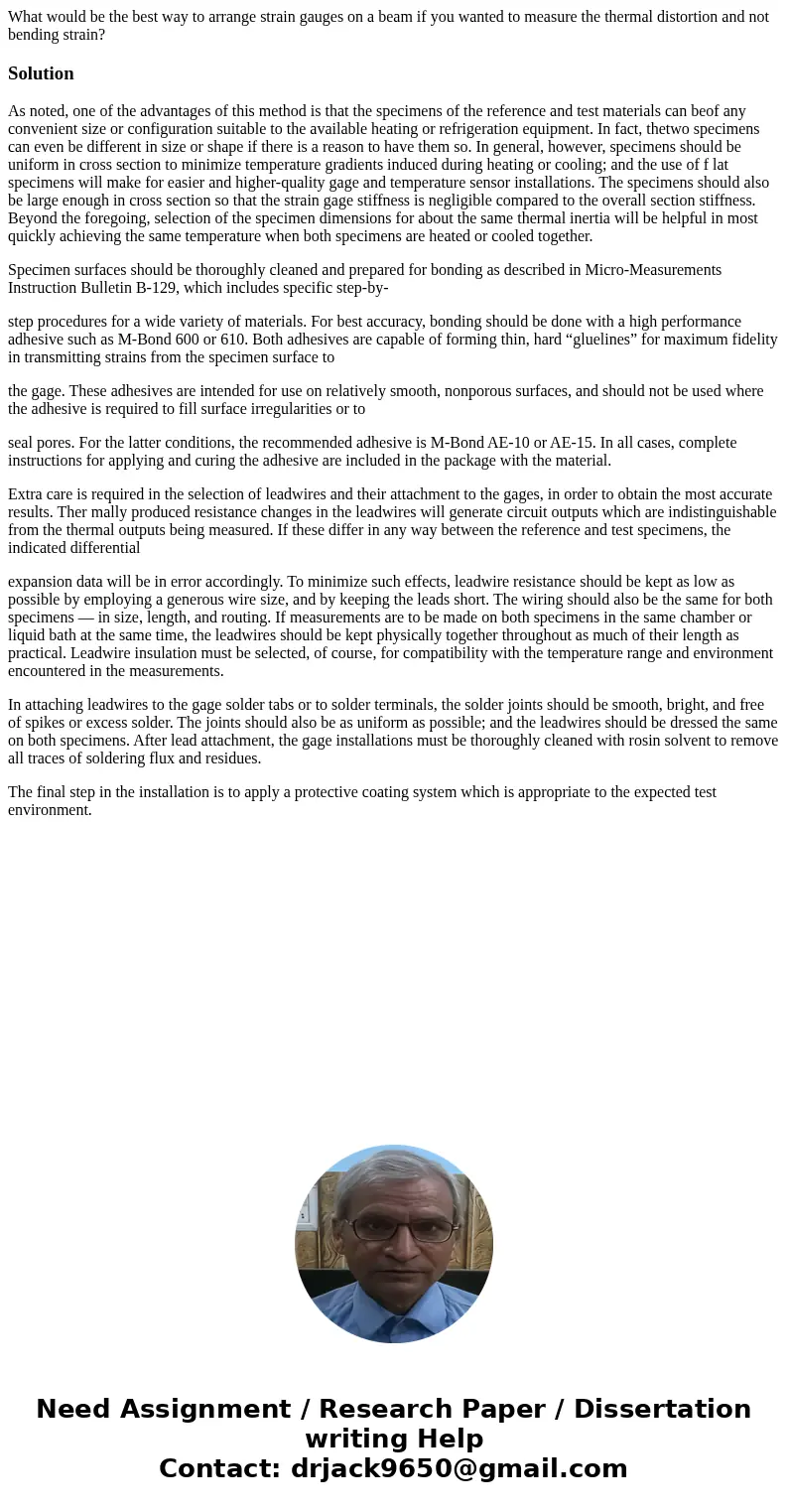What would be the best way to arrange strain gauges on a bea
What would be the best way to arrange strain gauges on a beam if you wanted to measure the thermal distortion and not bending strain?
Solution
As noted, one of the advantages of this method is that the specimens of the reference and test materials can beof any convenient size or configuration suitable to the available heating or refrigeration equipment. In fact, thetwo specimens can even be different in size or shape if there is a reason to have them so. In general, however, specimens should be uniform in cross section to minimize temperature gradients induced during heating or cooling; and the use of f lat specimens will make for easier and higher-quality gage and temperature sensor installations. The specimens should also be large enough in cross section so that the strain gage stiffness is negligible compared to the overall section stiffness. Beyond the foregoing, selection of the specimen dimensions for about the same thermal inertia will be helpful in most quickly achieving the same temperature when both specimens are heated or cooled together.
Specimen surfaces should be thoroughly cleaned and prepared for bonding as described in Micro-Measurements Instruction Bulletin B-129, which includes specific step-by-
step procedures for a wide variety of materials. For best accuracy, bonding should be done with a high performance adhesive such as M-Bond 600 or 610. Both adhesives are capable of forming thin, hard “gluelines” for maximum fidelity in transmitting strains from the specimen surface to
the gage. These adhesives are intended for use on relatively smooth, nonporous surfaces, and should not be used where the adhesive is required to fill surface irregularities or to
seal pores. For the latter conditions, the recommended adhesive is M-Bond AE-10 or AE-15. In all cases, complete instructions for applying and curing the adhesive are included in the package with the material.
Extra care is required in the selection of leadwires and their attachment to the gages, in order to obtain the most accurate results. Ther mally produced resistance changes in the leadwires will generate circuit outputs which are indistinguishable from the thermal outputs being measured. If these differ in any way between the reference and test specimens, the indicated differential
expansion data will be in error accordingly. To minimize such effects, leadwire resistance should be kept as low as possible by employing a generous wire size, and by keeping the leads short. The wiring should also be the same for both specimens — in size, length, and routing. If measurements are to be made on both specimens in the same chamber or liquid bath at the same time, the leadwires should be kept physically together throughout as much of their length as practical. Leadwire insulation must be selected, of course, for compatibility with the temperature range and environment encountered in the measurements.
In attaching leadwires to the gage solder tabs or to solder terminals, the solder joints should be smooth, bright, and free of spikes or excess solder. The joints should also be as uniform as possible; and the leadwires should be dressed the same on both specimens. After lead attachment, the gage installations must be thoroughly cleaned with rosin solvent to remove all traces of soldering flux and residues.
The final step in the installation is to apply a protective coating system which is appropriate to the expected test environment.

 Homework Sourse
Homework Sourse